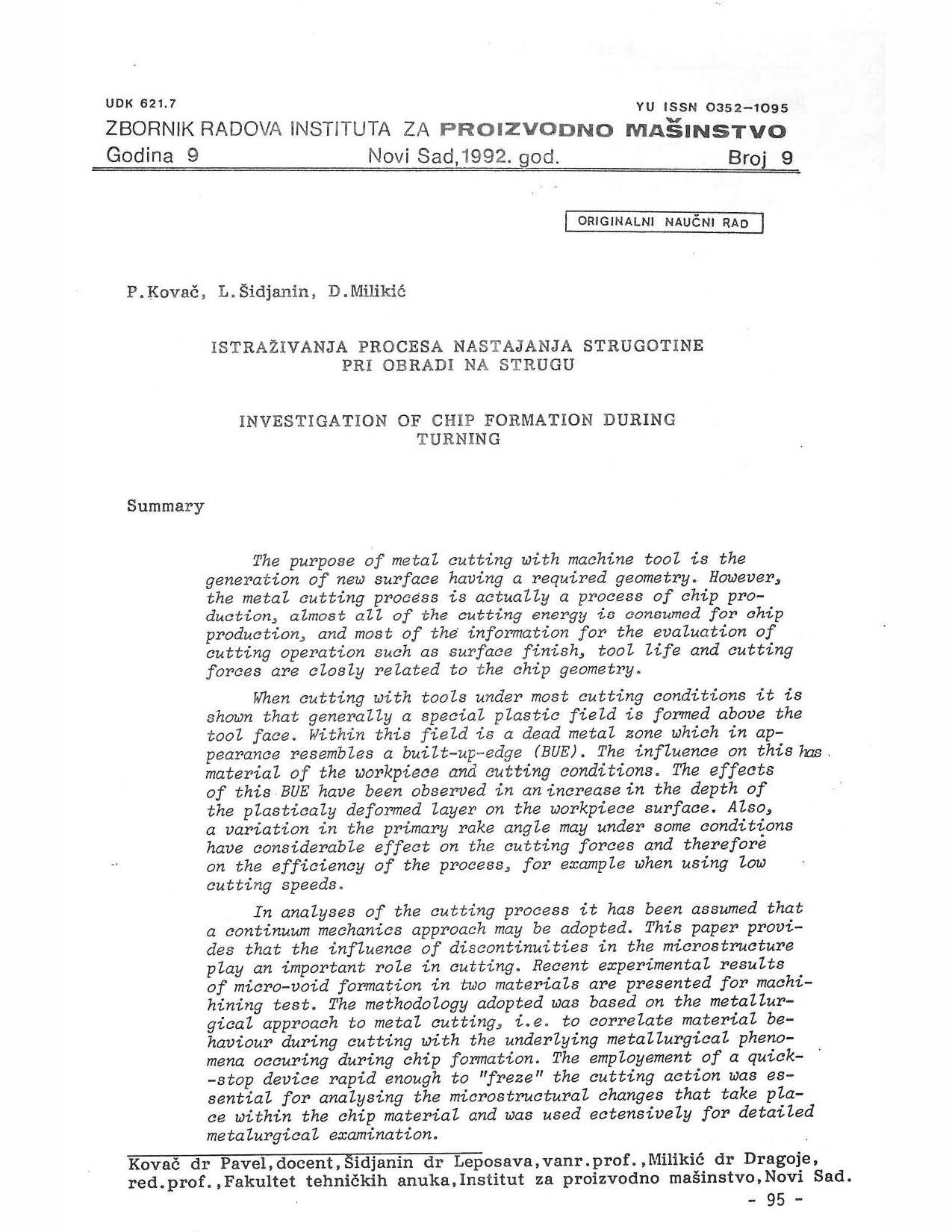
Published 1992-12-01
abstract views: 16 // FULL TEXT ARTICLE (PDF): 8
Keywords
- metal cutting,
- turning,
- chip formation
How to Cite
Copyright (c) 2023 Journal of Production Engineering

This work is licensed under a Creative Commons Attribution 4.0 International License.
Abstract
The purpose of metal cutting with a machine tool is the generation of a new surface with the required geometry. However, the metal cutting process is essentially a chip production process, and almost all of the cutting energy is consumed for chip production. Most of the information for evaluating the cutting operation, such as surface finish, tool life, and cutting forces, is closely related to chip geometry. When cutting with tools under most cutting conditions, it is generally observed that a special plastic field is formed above the tool face. Within this field, there is a dead metal zone that resembles a built-up edge (BUE) in appearance. The influence on this field varies depending on the material of the workpiece and cutting conditions. The effects of this BUE have been observed in an increase in the depth of the plastically deformed layer on the workpiece surface. Also, a variation in the primary rake angle may, under some conditions, have a considerable effect on the cutting forces and, therefore, on the efficiency of the process, especially when using low cutting speeds. In the analysis of the cutting process, it has been assumed that a continuum mechanics approach can be adopted. This paper provides evidence that the influence of discontinuities in the microstructure plays an important role in cutting. Recent experimental results of micro-void formation in two materials are presented for machining tests. The methodology adopted was based on the metallurgical approach to metal cutting, aiming to correlate material behavior during cutting with the underlying metallurgical phenomena occurring during chip formation. The use of a quick-stop device, rapid enough to "freeze" the cutting action, was essential for analyzing the microstructural changes that take place within the chip material and was extensively used for detailed metallurgical examination.

